Eight Former Churches Reborn, from Supercomputer to Skatepark
As buildings inspired by a belief in a higher power, churches often have soaring ceilings, detailed stonework, and other architectural flairs that make them simply amazing structures in their own right. When these churches are no longer used as places of worship, new innovative uses of the space can preserve that sense of awe, reimagining the gorgeous interiors for a new purpose. Here are eight incredible rebirths of former churches.
SKATERHAM
Surrey, England
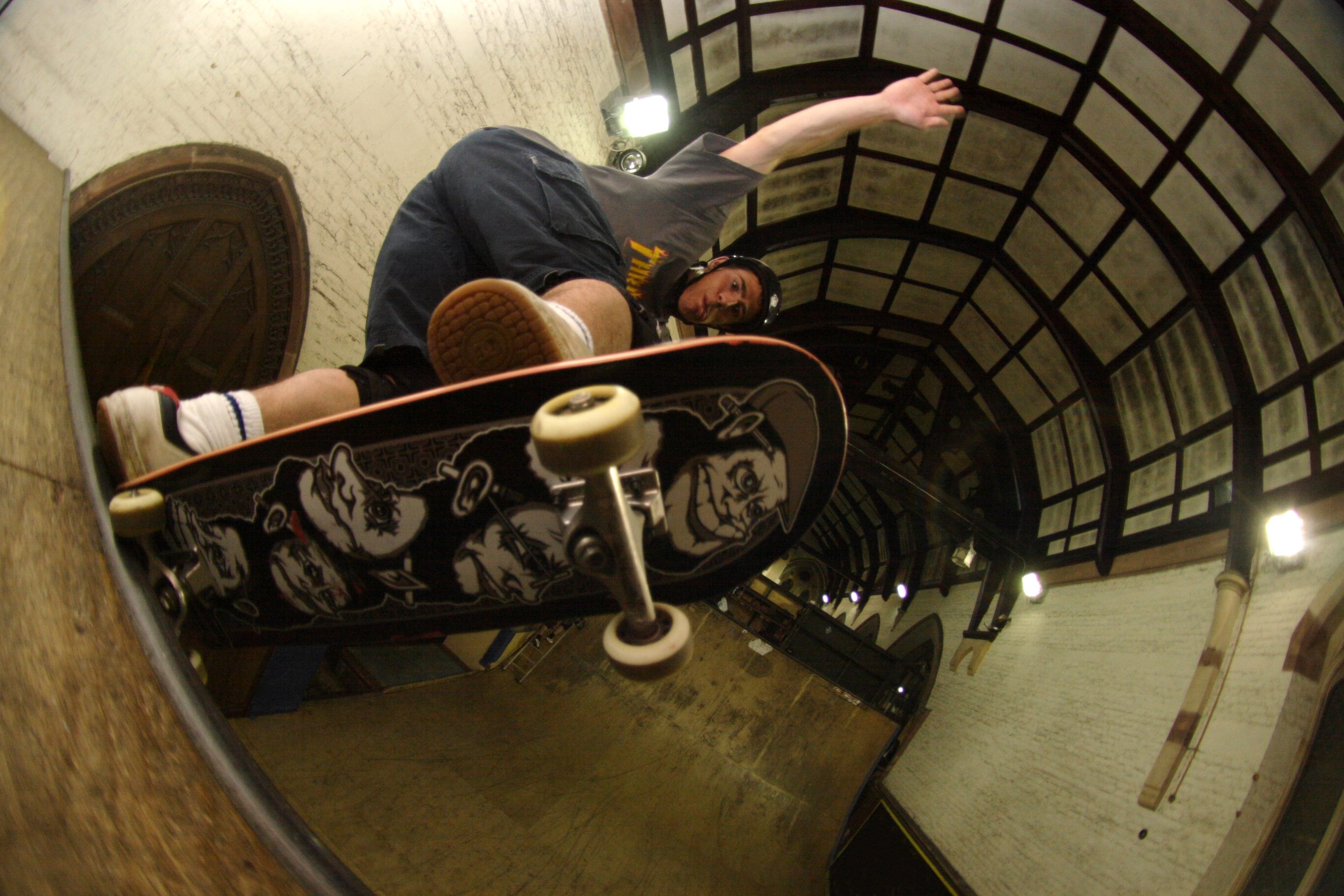
A skater on one of Skaterham’s ramps (photograph by Austin Fraser-Jones/Flickr)
In the former Guard’s Chapel of the Caterham Barracks Trust in Surrey, England, an indoor skate park known as Skaterham now houses endless ramps, quarterpipes, and jump boxes.
The brainchild of a youth conference held in 1999, Skaterham grew from an attempt to find out what the young people in the local area needed, and wanted. The kids themselves were consulted on every aspect of the design, and now over 26,000 people count themselves as Skaterham members. In addition to the skating facilities, there is a restaurant and a skate shop, all run by young volunteers.
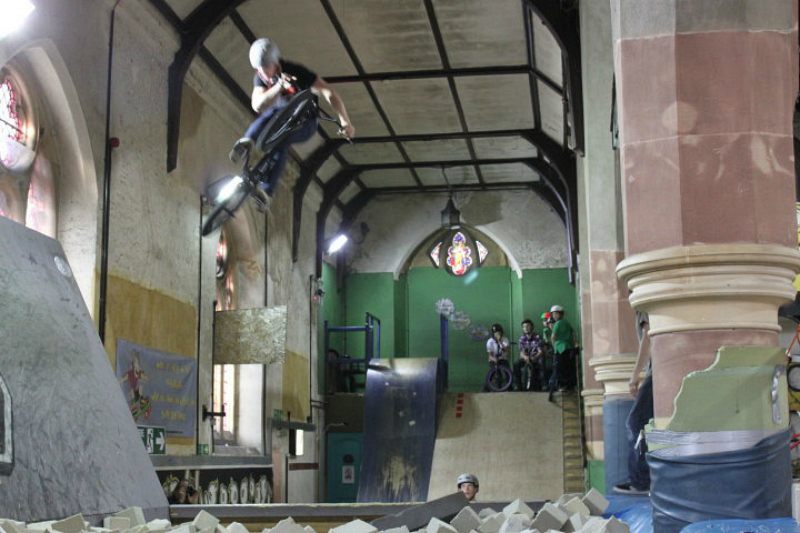 Skaterham (photograph by OLi PHiPPS/Flickr)
Skaterham (photograph by OLi PHiPPS/Flickr)
SELEXYZ DOMINICANEN
Maastricht, Netherlands
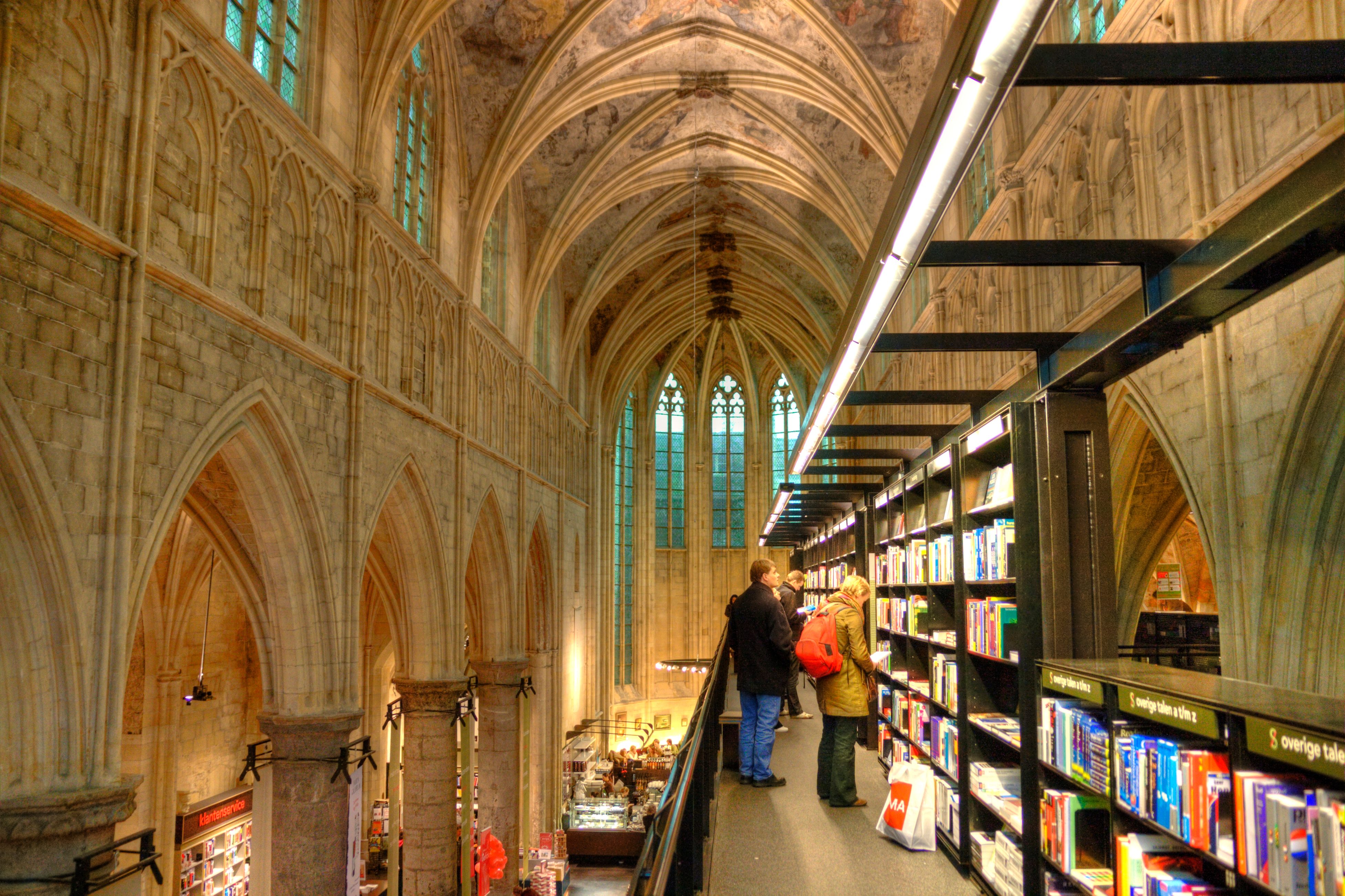 Bookstore patrons inside the Selexyz Dominicanen (photograph by Bert Kaufmann/Flickr)
Bookstore patrons inside the Selexyz Dominicanen (photograph by Bert Kaufmann/Flickr)
A gothic church consecrated in 1294 by the St. Dominic’s Order of Predicators is now a sleek bookstore in the heart of Maastricht, Netherlands.
No religious functions have been held here since 1794, which is when the church was first repurposed by Napoleon’s army for military purposes. Since then, it’s been a town archive, warehouse, and even briefly a space for bike storage. In 2005, the town decided to convert it into the Selexyz Dominicanen bookstore that contains 1,200 square meters of literary retail space.
Stairs lead visitors up to imposing black steel bookcases, which also lend an up-close look at the vaults of the nave and the detailed frescoes. Upwards of 700,000 people stream through this old church every year to peruse the over 25,000 books.
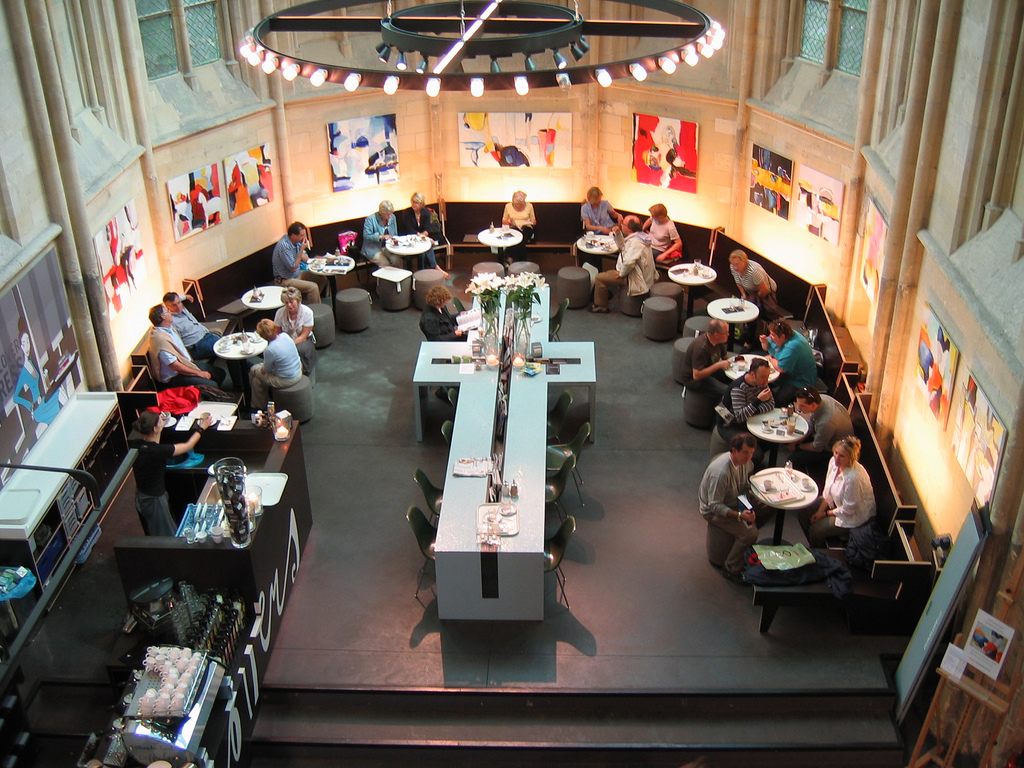 Selexyz Dominicanen (photograph by Minke Wagenaar/Flickr)
Selexyz Dominicanen (photograph by Minke Wagenaar/Flickr)
ENTREPRENÖRSKYRKAN
Stockholm, Sweden
 Aerial view of the Entreprenörskyrkan (photograph by Fredrik Wass/Flickr)
Aerial view of the Entreprenörskyrkan (photograph by Fredrik Wass/Flickr)
Known as the Entreprenörskyrkan, the “Entrepreneurs Church” in Stockholm is a co-working space housed in a former Greek Orthodox Church.
Small business start-ups now populate the main hall, filling the open-office space with spunky, techie energy. On any given day, there are hackathons, video game nights, start-up socials, and other tech events.
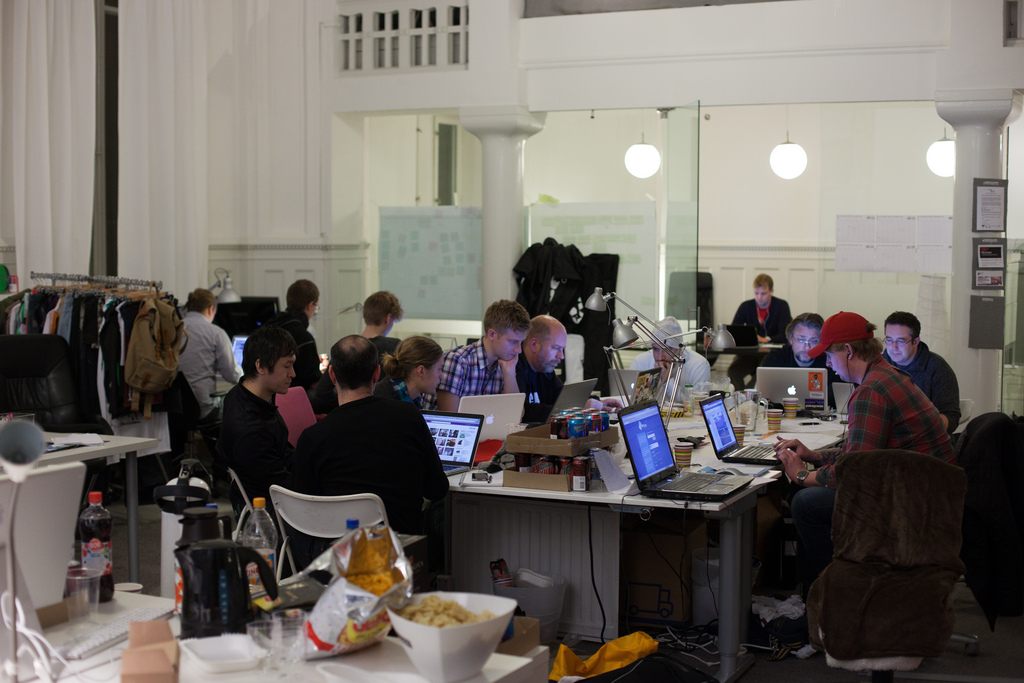 Entreprenörskyrkan (photograph by Erik Starck/Flickr)
Entreprenörskyrkan (photograph by Erik Starck/Flickr)
MONIQUE-CORRIVEAU LIBRARY
Quebec, Canada
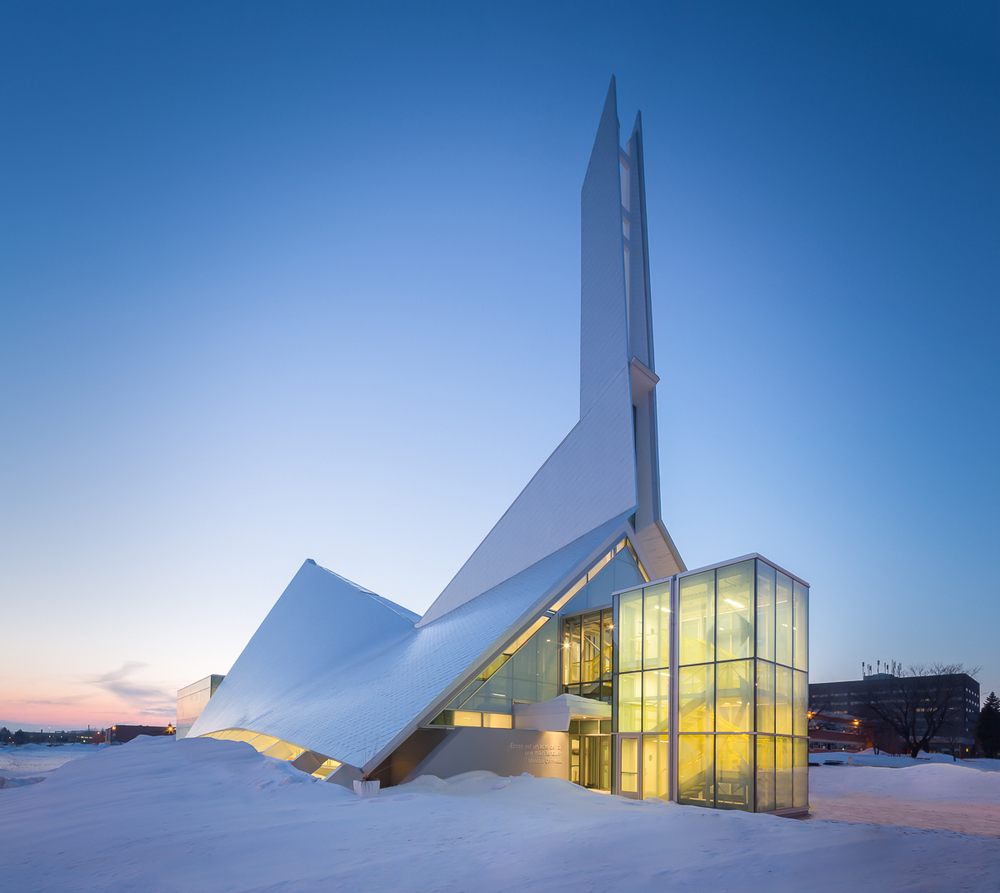 Exterior of the Monique-Corriveau Library (photograph by Esteban Ravanal/dsgnr.cl)
Exterior of the Monique-Corriveau Library (photograph by Esteban Ravanal/dsgnr.cl)
Canadian architect Jean-Marie Roy designed the dramatic profile of Quebec’s St. Denys-du-Plateau Church in 1964, which in winter appears to float just above the ground.
Later deconsecrated and renamed as the Monique-Corriveau Library after a local author, the ex-church is now a public library and local community center. Visitors enter the building through a glass atrium in the church’s former nave, and can enjoy the library’s offerings amidst bold reflective colors that enhance the white brilliance of the original church.
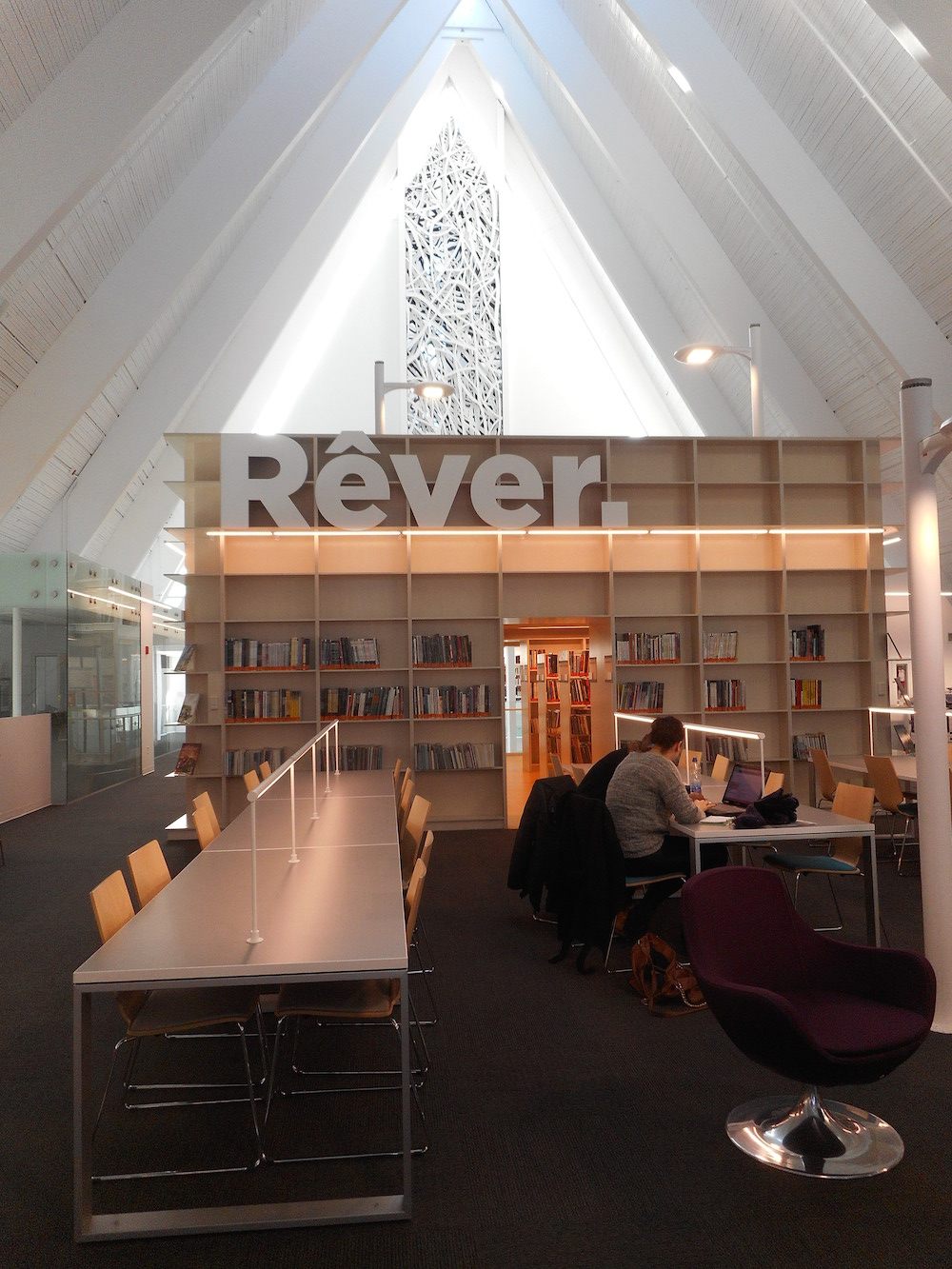 Rêver (“to dream”) in the Bibliothèque Monique-Corriveau (photograph by Jeangagnon/Wikimedia)
Rêver (“to dream”) in the Bibliothèque Monique-Corriveau (photograph by Jeangagnon/Wikimedia)
BARCELONA SUPERCOMPUTING CENTER
Barcelona, Spain
 MareNostrum’s glass box (courtesy of Barcelona Supercomputing Center)
MareNostrum’s glass box (courtesy of Barcelona Supercomputing Center)
Inside the stone halls of the 19th-century Chapel Torre Girona, a supercomputer named MareNostrum beeps away in a massive glass box that displays its electronic innards along the length of the old church’s main hall.
The church itself was rebuilt after the Spanish Civil War, and is located on the campus of the Polytechnic University of Catalonia. Used as a Catholic church until 1960, the space was deconsecrated and transformed into an events space before the Barcelona Supercomputing Center moved in.
MareNostrum has been operating since 2005, working its way towards groundbreaking discoveries in genetics, weather forecasting, and astrophysics at a rate of 63.8 trillion operations per second. In 2012, researchers at the Center reported breakthroughs in antigen therapy by using MareNostrum to simulate the structure of triple helix DNA within a vacuum.
 MareNostrum beeping away (courtesy of Barcelona Supercomputing Center)
MareNostrum beeping away (courtesy of Barcelona Supercomputing Center)
CHURCH BREW WORKS
Pittsburgh, Pennsylvania, United States
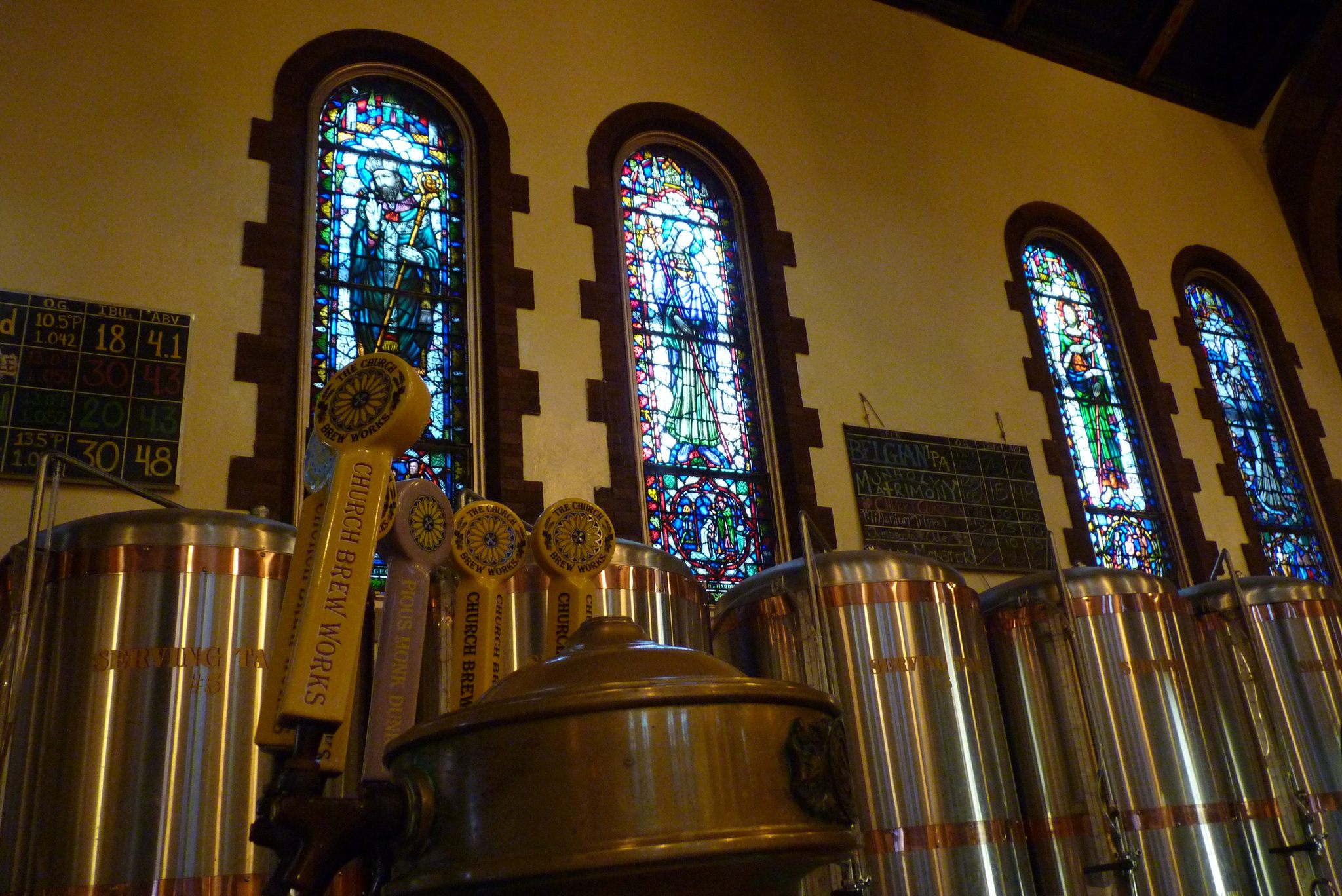
The Church Brew Works, Pittsburgh (photograph by ctj71081/Flickr)
Inside what used to be St. John the Baptist Church in the Lawrenceville neighborhood of Pittsburgh, the Church Brew Works has been malting and fermenting away since 1996, just three years after the original church closed its doors.
In its flagship beers, the brewers make nods to the building’s prior use, naming them Celestial Gold, Pipe Organ Pale Ale, and Pious Monk Dunkel. In 2012, the Church Brew Works won the Great American Beer Festival’s Large Brewpub Brewer of the Year Award.
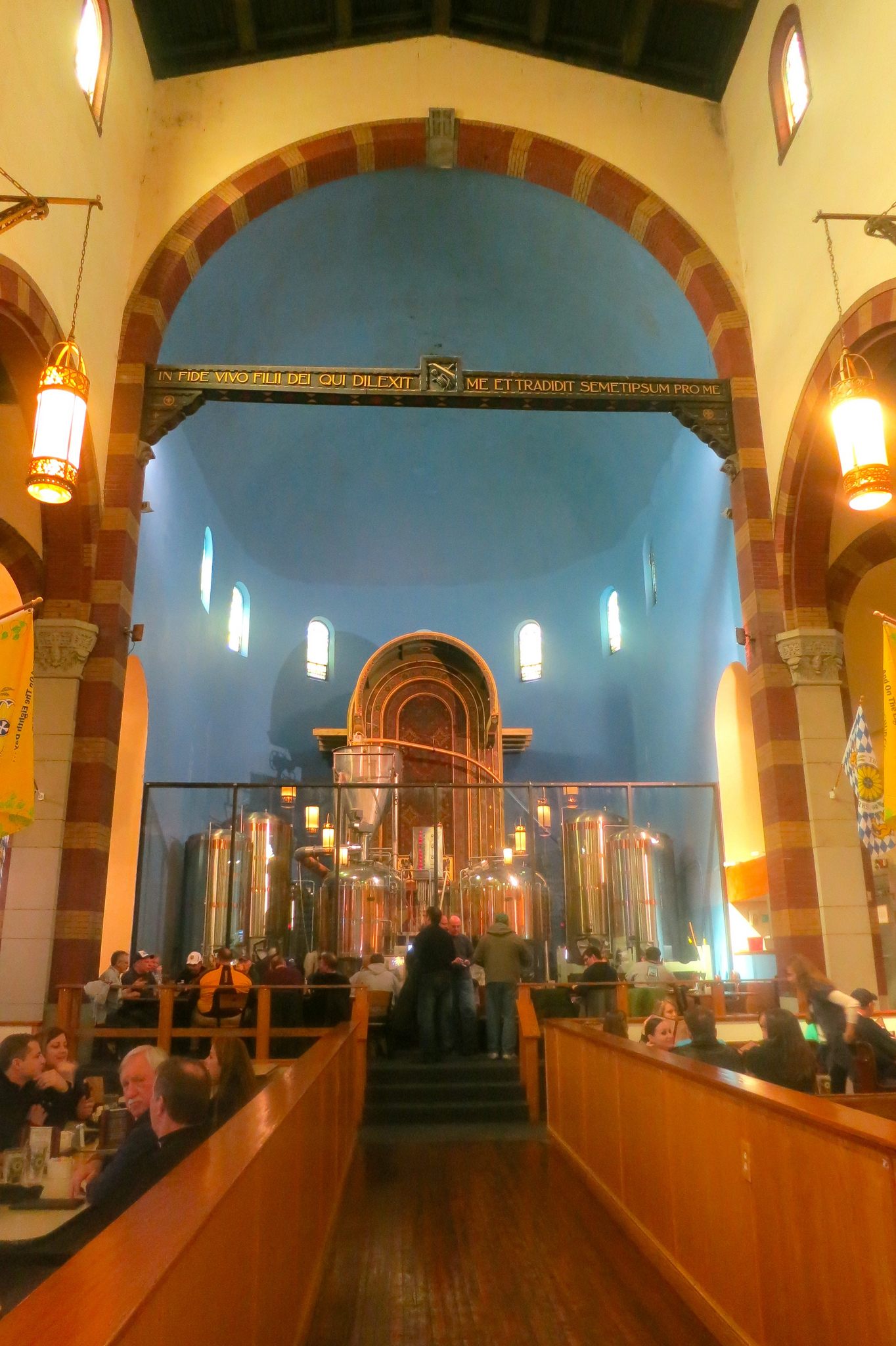 Church Brew Works (photograph by Bill Rand/Flickr)
Church Brew Works (photograph by Bill Rand/Flickr)
MR. SMALL’S FUNHOUSE
Millvale, Pennsylvania, United States
 Sleigh Bells performing at Mr. Small’s Funhouse (photograph by RJ Schmidt/Flickr)
Sleigh Bells performing at Mr. Small’s Funhouse (photograph by RJ Schmidt/Flickr)
From the altar of what was an 18th-century Catholic church, also in the Pittsburgh area, performers now get different types of congregations jumping and dancing.
Nationally-known groups and indie rock types alike have come through Mr. Small’s Funhouse. The building also now houses a maze of outdoor terraces and DJ club rooms. Across the street, Mr. Small’s owners have bought a second abandoned church, and will be transforming it into a recording studio, café, and store for musical instruments.
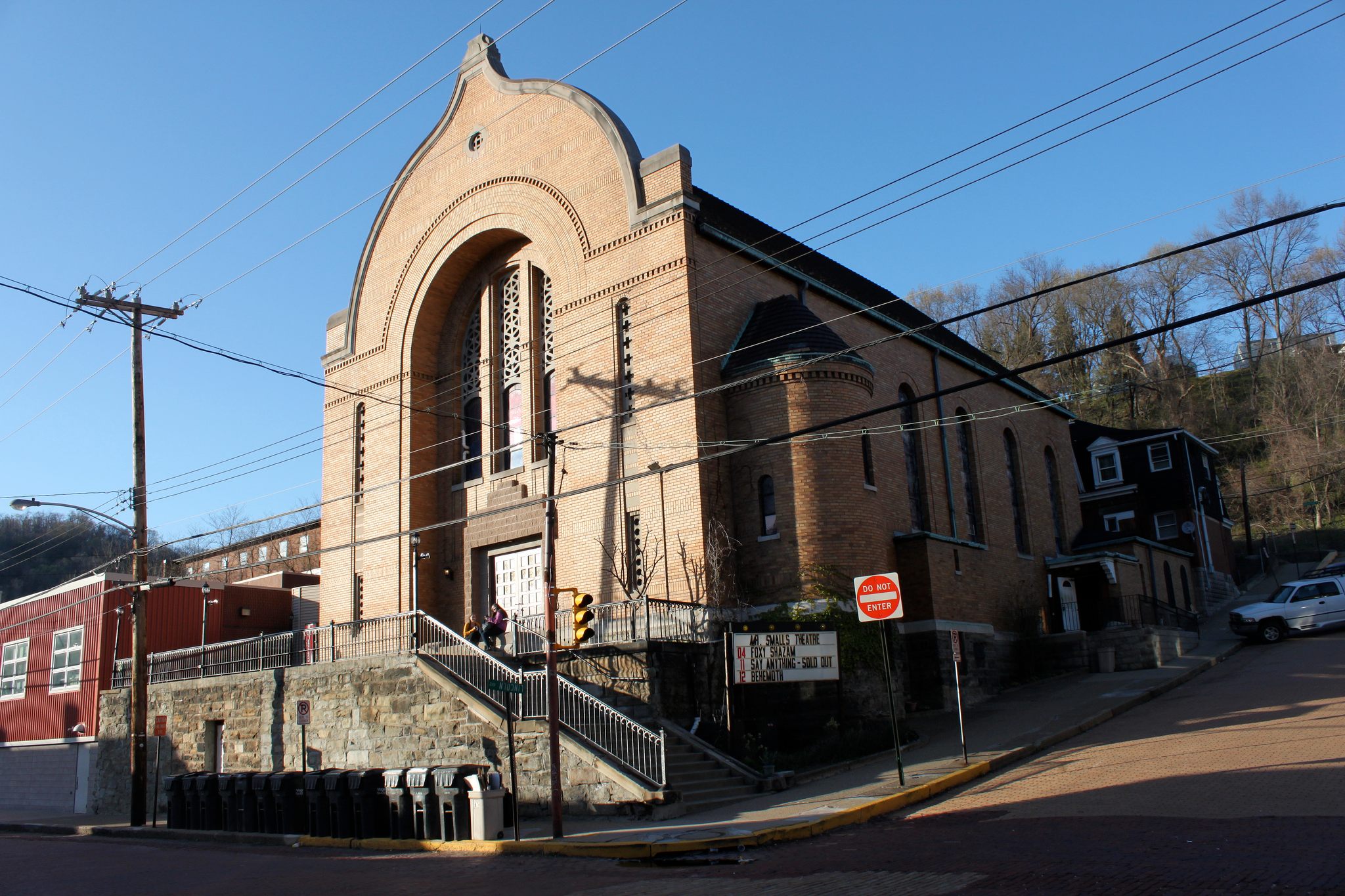 Exterior of Mr. Small’s Funhouse (photograph by Joseph/Flickr)
Exterior of Mr. Small’s Funhouse (photograph by Joseph/Flickr)
SOUTH RIVER VINEYARD
Shalersville, Ohio, United States
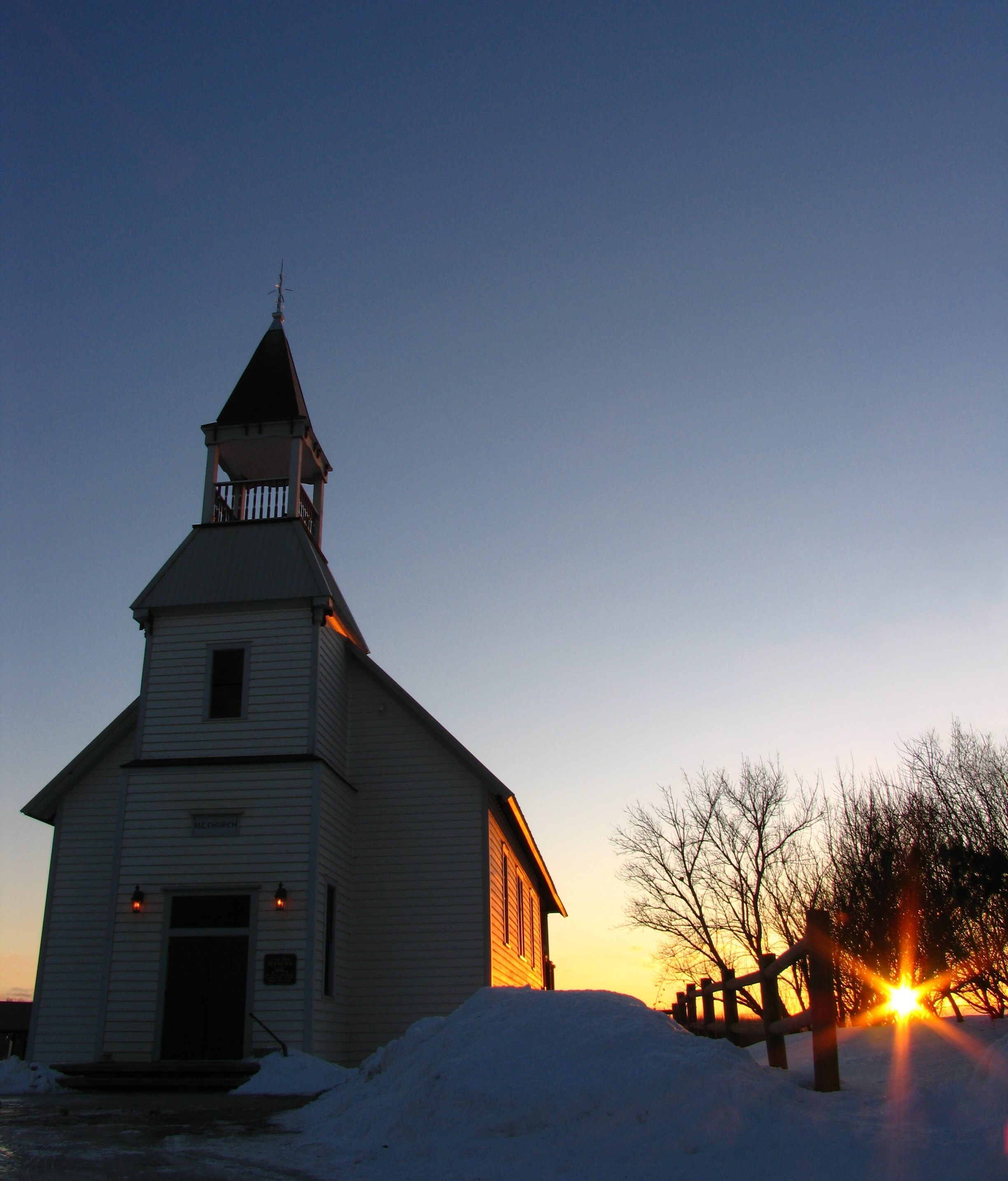 South River Vineyard at sunset (photograph by Mark K./Flickr)
South River Vineyard at sunset (photograph by Mark K./Flickr)
Originally built in 1892 as a Methodist chapel 50 miles from its current location in Shalersville, Ohio, the South River Vineyard’s building was moved in 2000 by the winery owner, Gene Sigel.
Gene had spotted the church while waiting for a street light to change and he was so intrigued by the structure that he asked a neighbor for permission to photograph it. The woman responded that he could do more than that since the building was for sale for just the cost of dismantling it. A week later, Gene was already in the process of shifting it to its current location, where it’s now part of a charming vineyard.
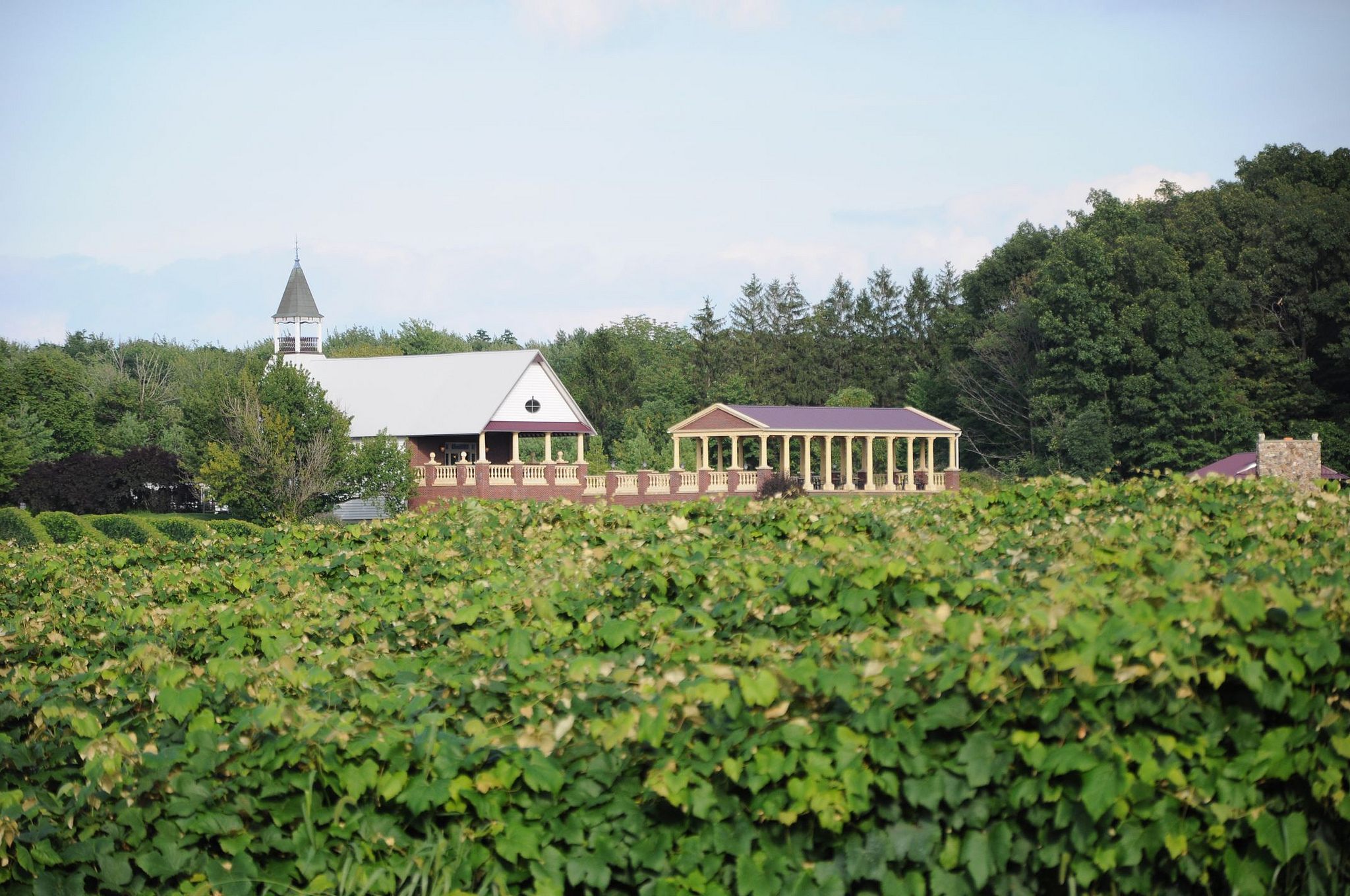 South River Vineyard (photograph by Everett/Flickr)
South River Vineyard (photograph by Everett/Flickr)


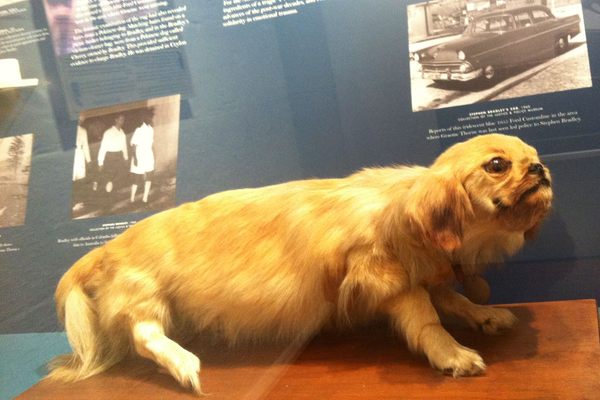
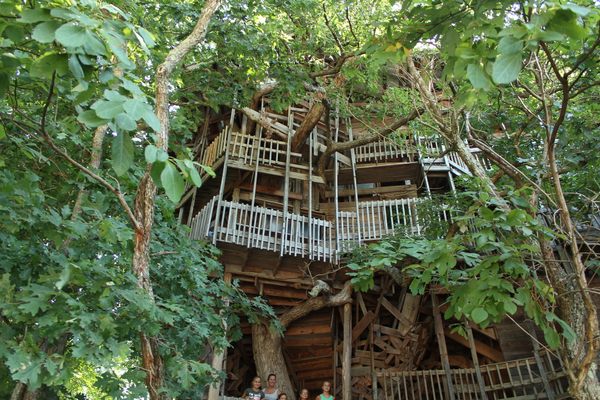




















Follow us on Twitter to get the latest on the world's hidden wonders.
Like us on Facebook to get the latest on the world's hidden wonders.
Follow us on Twitter Like us on Facebook